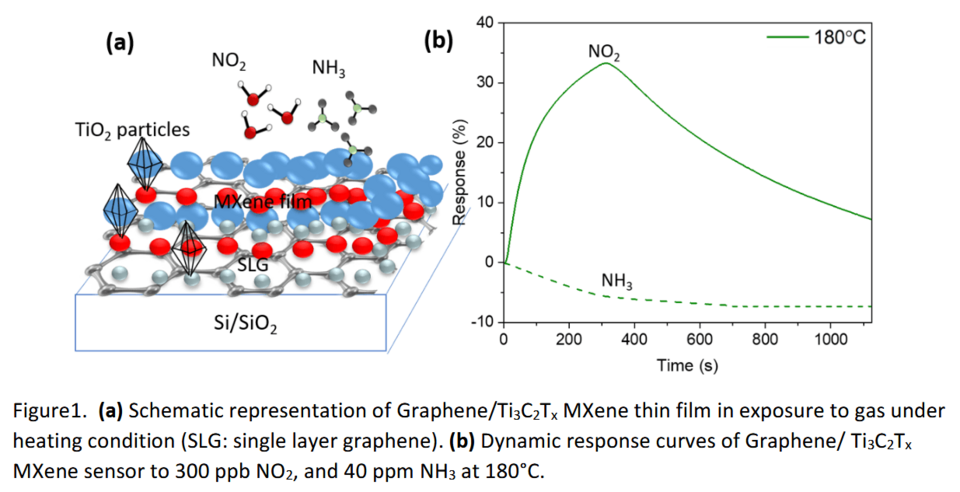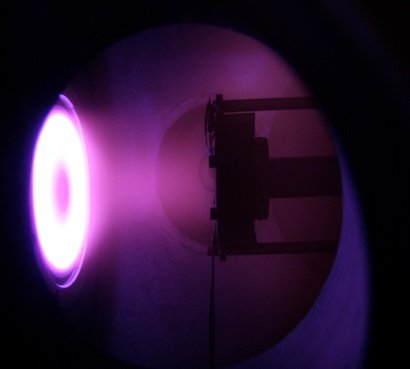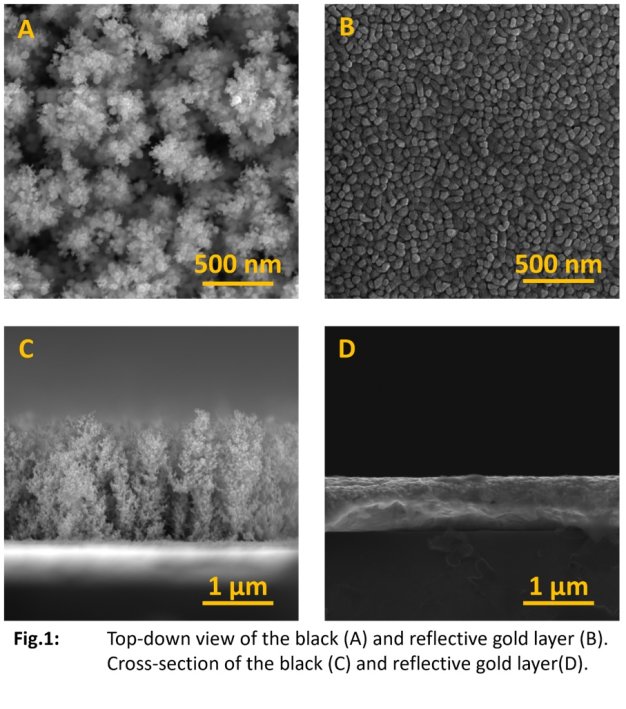Sensortehnoloogiate labori seminar
Neljapäeval, 8. mail kell 11.15 toimub ruumis D312 STL seminar:
STL seminar will take place in room D312 on Thursday, 8th of May at 11:15:
Valter Kiisk
Detecting air pollution with commercial MEMS gas sensors using modulated heating
Miniaturization of metal oxide semiconductor gas sensors over the past few decades (using MEMS fabrication) has notably reduced their power consumption. Miniaturization also enables novel approaches for sensor readout due to rapid temperature control. Hereby we investigated the performance of several commercial MEMS gas sensors utilizing an original approach of modulated heating and lock-in detection. Most sensors showed 2–3 times improvement in terms of response or recovery speed. Carbon monoxide detection also experienced improved stability and reduced moisture sensitivity.
The presentation covers the results of the experimental development project “Development of air quality sensor prototype”.

Varasemad
Karl Artur Lokk (3. kursuse üliõpilane)
Using deep neural networks as fast approximations to full-wave simulations
This talk presents preliminary results from a bachelor's thesis project investigating the use of deep neural networks as fast approximations to full-wave simulations. The work involves 2D simulations of dielectric structures using the finite-difference frequency-domain (FDFD) method. A UNet architecture is trained to predict the resulting electric field distributions for specific geometries. The current state of the project is discussed, including methodology for hyperparameter optimization, network architecture choices, and an overview of preliminary results so far.
Raivo Jaaniso
Modelling the gas response of 2D materials – Part 2: Some extensions of the basic model
The seminar will provide a brief overview of some theoretical concepts for describing and interpreting changes in the electrical conductivity of two-dimensional materials due to a gas environment. In the case of two-dimensional materials, the modelling of these processes is simpler compared to bulk semiconductors, since there is no need to consider space charge or diffusion. Starting with a Langmuir basic model, we will consider which mathematical functions can be used to approximate the experimental data and within what limits the obtained parameters can be used to interpret the underlying mechanisms.
Indrek Renge
Atomic level description of graphene-based gas sensing mechanisms
In a toxic gas sensor the small molecules produce a conductivity change of graphene that is functionalized with a metal oxide (MOX) nano-phase, and optionally, exposed to UV-vis light. Bulk MOX and its surface will be treated as a collection of ions, rather than a homogeneous crystalline phase. This allows one to apply the powerful concepts of physical (in)organic chemistry, in particular, the structure-energy-property relationships (Pauling, Hammett, Palm). The qualitative rationalization of processes in participation of light quanta, electrons, protons, atoms, ions, and molecules should be in agreement with computer chemical output. Hypotheses are advanced to explain how toxic gas at concentration in parts-per-billion can ultimately generate a strong conductive response of graphene.

Artjom Berholts
Light-enhanced sensors of oxidizing gases based on single-layer CVD graphene
(results of the PhD thesis to be defended)
Gas sensors with improved functional properties (high sensitivity, selectivity, and stability; low power consumption) are needed to detect a wide variety of gases originating from both natural and anthropogenic sources. Graphene – a material consisting of a single layer of carbon atoms - has emerged as an ideal building foundation for gas sensors since its entire surface can act as a sensing area.
This thesis focuses on investigating the influence of ultraviolet (UV) light on the functional properties of graphene-based sensors towards two oxidizing gases – oxygen (O2) and nitrogen dioxide (NO2). The first part of the thesis focuses on studying the light irradiation effect on pristine chemical vapor deposited (CVD) graphene. For that, the electrical properties of graphene were investigated, as well as the influence of UV light on O2 sensing. The results demonstrated a highly beneficial effect of irradiation, which led to the activation of an initially inert sensor, making it sensitive to oxygen concentration changes and improving response and recovery speed. As a next step, both pristine and modified CVD graphene were tested as sensors for NO2, a highly toxic polluting gas causing millions of premature deaths per year in the whole world. For graphene modification, pulsed laser deposition was used to grow thin layers of oxides (ZrO2, TiO2) or metal (Ag) on top of graphene. The highest sensitivity was obtained with titania-coated graphene sensors under UV light. Gas concentrations down to 10 ppb (10 parts per billion) were investigated with the estimated level of detection of 0.03 ppb. Additionally, the excellent selectivity of the graphene/TiO2 sensor was showcased, as NO2 results significantly overperformed those for other polluting gases (CO, SO2, and NH3), as well as humidity.
Overall, it was demonstrated that the irradiation with low-power UV light (365 nm) allowed a considerable increase in the sensitivity towards the studied gases and increased the response and recovery rates so that all functional parameters became within the range of real-world applications for the sensors operated at room temperature.
Burak Baloglu
Exploring the Potential of Graphene/h-BN van der Waals Heterostructures for Highly Stable Gas Sensors
The advent of graphene has revolutionized the isolation of various bulk materials into their two-dimensional (2D) forms, many of which exhibited superior gas-sensing properties compared to their bulk counterparts. Over the past decade, heterostructures (stacking) of these materials, stabilized by van der Waals (vdW) bonds, have been developed to leverage their synergistic effects and enhance the performance of gas sensors.
Graphene stands out due to its high surface area, exceptional electrical conductivity, and high carrier mobility, making it an excellent candidate for gas sensing applications. 2D hexagonal boron nitride (h-BN), on the other hand, provides excellent thermal stability and high oxidation resistance, making it an ideal complement to graphene.
We aimed to create vdW heterostructures of graphene and h-BN with the intention of detecting toxic gases (NO2, NH3, etc.) in a highly stable manner. Notably, in this work, BN was directly deposited on graphene-based gas sensors via pulsed laser deposition to serve both as a sensing layer and a protective layer for graphene. I will present the potential of such heterostructures in gas sensing and share our latest progress in this endeavor.

Taavi Repän
Analyzing formation of gold particles by laser annealing nanoporous gold films
Colleagues in Prague have fabricated films of gold particles by shining CW laser light (up to 200 mW) on a nanoporous gold film. Under laser irradiation, the gold structure melts and forms individual spherical particles on the glass substrate. We have studied these samples using scanning electron microscopy (SEM) and full-wave simulations of the particles in order to characterize the size and shape of the formed particles. In particular, we have picked three different samples obtained using laser powers of 100 mW, 150 mW, and 200 mW. From SEM images, we obtained an estimate of the particle size distribution in these samples. Then, using numerical simulations, we calculated absorption spectra for a variety of spherical gold particles on a glass substrate with different sizes and shapes (wetting angle). The numerical fitting of the simulation results against experimentally measured absorption spectra then indicates the particle shapes as a function of laser power. In the seminar, I will present the preliminary results of this study.

Paniz Vafaei
Gas-sensing performance of Graphene functionalized with MXene nanostructures
Among two-dimensional (2D) materials, Graphene and MXene have shown promising potentials in the field of gas sensing due to their high electrical conductivity, and large surface area. However, MXenes with tunable surface functionality, variable layer spacing, and hydrophilicity have been more advantageous. Herein, we deposited a thin layer (< 20 nm) of MXene using interfacial film formation on CVD graphene to study their gas sensing responses in exposure to different concentrations of NO2 in an N2 environment at room temperature, as well as heating conditions. Compared to the pristine MXene, the Graphene/Ti3C2Tx showed approximately twenty times higher responses to 300 ppb NO2 at 180°C which may relate to the partial oxidation of MXenes which is different from the pristine MXene and enables selective response to NO2.

Martin Siebel
Technical University of Darmstadt
First principle simulation of gas adsorption on graphene / h-BN structures
Master's thesis defence presentation
Reviewers: Prof. Dr Hongbin Zhang and Assoc. Prof. Pavel Rubin
Abstract: This work made density functional theory calculations (using VASP code) for investigating the projected densities of states and adsorption energies of two different graphene / hexagonal boron nitride (h-BN) structures at the adsorption of NO2, NH3 and O3 gas molecules. This was done to investigate the gas-sensing capabilities of those structures. The super-cells of the investigated structures consisted of a base layer with 72 carbon atoms. The difference between the structures was the size of the top layer, which had either 36 boron and 36 nitrogen atoms or 11 boron and 11 nitrogen atoms. In addition, the size of both structures was increased by using periodic boundary conditions. The structures have been relaxed in the first step without the gas molecules and in the second step with all of the different gas molecules. The projected densities of states, Bader charges, and adsorption energies have been calculated.
The results show the theoretical possibility of detecting NO2 using both structures via a shift of graphene's Dirac point within the density of states analyses. In the case of O3, the detectability is given using the complete structure, while the gas dissociated on the reduced structure. In addition, the reduced structure shows promising results for detecting NH3, which acts as a charge acceptor.
Dejan Prokop
Preparation of Black Titanium/Titanium Nitride Thin Films by Magnetron Sputtering
Faculty of Mathematics and Physics, Charles University, Prague
Institute of Physics of the Czech Academy of Sciences
Recently, black aluminium (B-Al) films proved to be very useful with their highly structured fractal-like porous surface morphology that is able to effectively trap the incident light. We also proposed some of the applications for it. Motivated by this, we tried to prepare another material – Black Titanium (B-Ti). Compared to aluminium, titanium-based materials are widely used because they possess a combination of useful mechanical, tribological, and chemical properties e.g. TiN has a high hardness, good wear, and corrosion resistance as well as thermal stability. By changing the argon to nitrogen ratio in our magnetron sputtering chamber we can modify the properties of our films. Furthermore, we are trying to implement optical emission spectroscopy to correlate the plasma parameters with resultant films. Even though we are still far from our desired goal, we were able to prepare the films and study the dependence of nitrogen content by optical diffuse reflectance/transmittance measurement and structural properties by X-ray diffraction.

Physical and Chemical Properties of Black Gold Layers
Jan Kejzlar
University of Chemistry and Technology, Prague
Institute of Physics of the Czech Academy of Sciences
This contribution is focused on material characterization of black gold layers compared to a bulk metal. As these layers represent novel approach for gas sensing, broad material characterization is in place. The black gold layer properties are compared to the bulk metal by a high variety of methods. The impact of the nanostructured surface is discussed from the perspective of morphology, crystallography, chemical composition, reflectivity and absorbance.

Anna Soosaar
Functionalization of CVD graphene by fs-laser treatment for gas sensing applications
(materials of BSc thesis, 10 min)
Graphene and related 2D materials can be used to construct very sensitive gas sensors. In order to achieve high selectivity for detecting different gases, it is necessary to functionalize these materials. In this work, the functionalization is carried out by femtosecond laser treatment. A new fs-laser treatment set-up at the Institute of Physics was tested, and different laser-processed chemiresistive gas sensor chips were studied. The analysis by Raman spectroscopy revealed that the laser-induced defects were created by a two-photon mechanism. The sensitivity of laser-treated sensor chips made on Si/SiO2 substrates increased up to 10 times to 150 ppb of NO2 gas exposure in the air.
Burak Baloglu
Graphene in blister-based LIFT
(materials of MSc thesis, 15 min)
Laser-induced forward transfer (LIFT) can provide a clean (non-contact and solvent-free) technique for the high-resolution printing of two-dimensional materials, a significant technological step for their integration into microdevices. The blister-based (BB) version of LIFT allows the transfer of ultra-thin layers without damaging the materials on the receiving substrate with intense laser light. This work investigated single-layer graphene in different roles as a donor, acceptor and release material in BB-LIFT. The transfer of graphene and ultrathin oxide (ZrO2) layers was confirmed and characterised through optical microscopy, Raman spectroscopy and scanning electron microscopy (SEM). The crucial role of the graphene interlayer in ZrO2 transfer was revealed. The immediate motivation for the work was the improvement of graphene-based gas sensors by transferring ultrathin oxides as gas sensor receptor layers on the CVD graphene as a transducer layer. It was found that the sensitivity of sensors to trace level NO2 gas did not practically increase after BB-LIFT of ultrathin (0.5-50 nm) ZrO2 layers. This was interpreted as a lack of strong interactions of the transferred oxide flakes (and a small contact area) with the graphene layer of the sensor substrate. In order to increase the interaction, the sensors were annealed at a higher temperature (up to 500 ℃ in a vacuum), which significantly accelerated the gas response. The work highlights the finding that the oxide layer can be transferred only when graphene is inserted between the blister and oxide layers. This is a novel application for graphene, considerably widening the scope of materials transferable by BB-LIFT.


